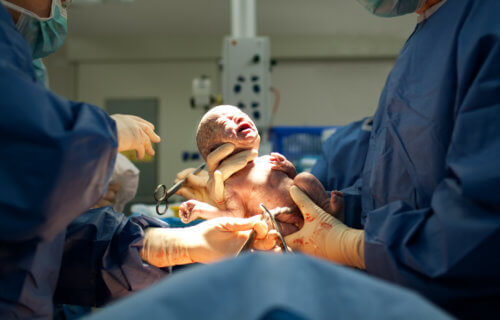AURORA, Colo. — Following a cesarean section birth, new moms are usually in a lot of pain. Doctors often prescribe opioids to help these women manage their recovery better. Now, a study finds that a combination of new, innovative recovery strategies can reduce the need for potentially dangerous painkillers by 80 percent.
A team at Children’s Hospital Colorado adds, after employing these methods, one-third of new mothers didn’t need to take a single opioid pill after giving birth.
After looking back on C-section births at Children’s Hospital Colorado between 2015 and 2020, researchers discovered a number of helpful recovery methods that can help reduce opioid use. Those strategies include using a wound infusion pump, removing urinary catheters earlier, and having new moms get up and walk around the same day as their C-section.
“In line with our work to reduce opioid usage with the wound infusion pump, we wanted to see if enhanced recovery efforts in combination with the pump would further reduce the need for narcotic pain medicine,” says Cristina Wood, MD, co-research lead and obstetric anesthesiologist with the Colorado Fetal Care Center, in a media release. “These are moms who are going through so much already. We want to do everything we can to help them care for and interact with their baby, while providing optimum pain control.”
C-section deliveries are common, and so is opioid use
C-sections are quite common in the United States. The Centers for Disease Control and Prevention say they account for roughly 32 percent of all deliveries. Currently, the post-birth pain management regimens most hospitals and care providers employ include giving patients opioids.
“As concerns about the use of opioids grew and literature on the effectiveness of wound infusion pumps was inconsistent, we saw an opportunity for improvement,” adds obstetrician and co-researcher Frank Chow, MD. “And the improvement was striking. Using enhanced recovery efforts such as scheduling non-narcotic medications postoperatively, limiting intraoperative IV fluids to reduce bowel swelling, implementing prophylactic anti-nausea medication, removing urinary catheters earlier and ambulating the same day of surgery in combination with the wound infusion pump resulted in a dramatic reduction in narcotic pain medication.”
This research was presented at the Society for Maternal Fetal Medicine’s Annual Meeting.
